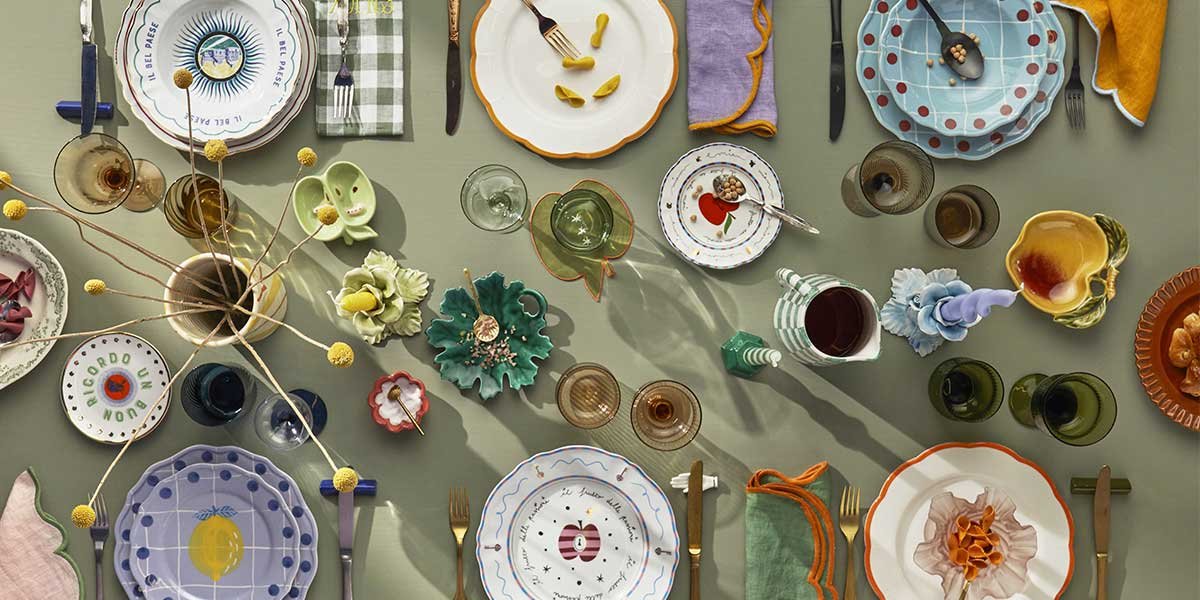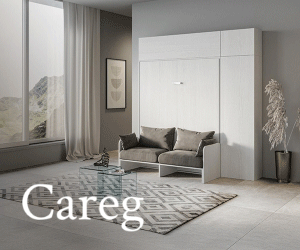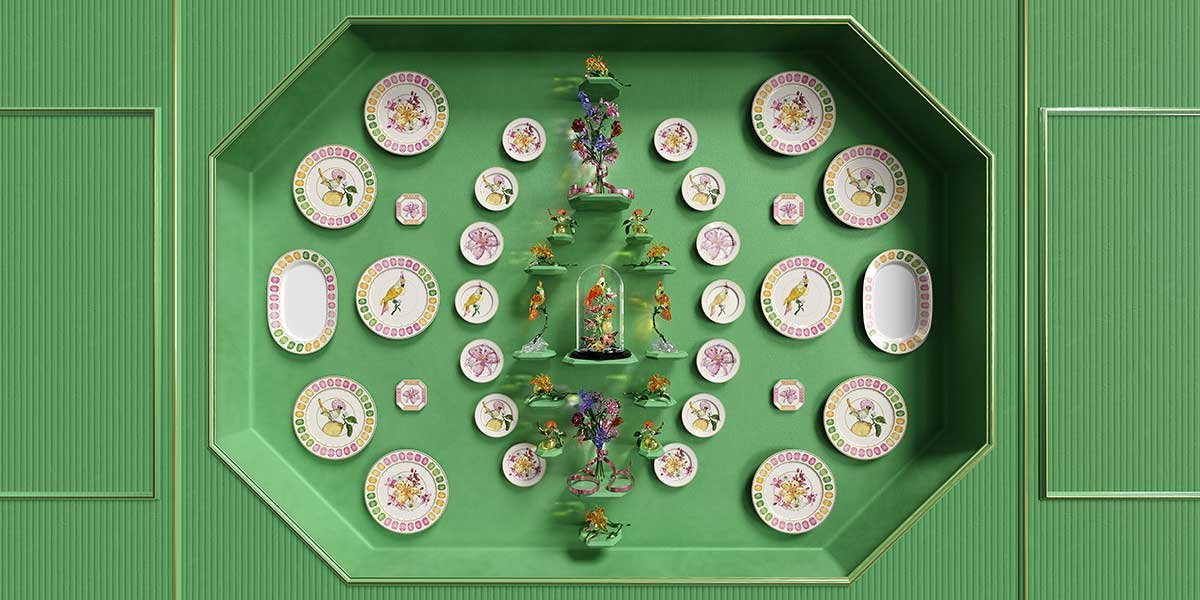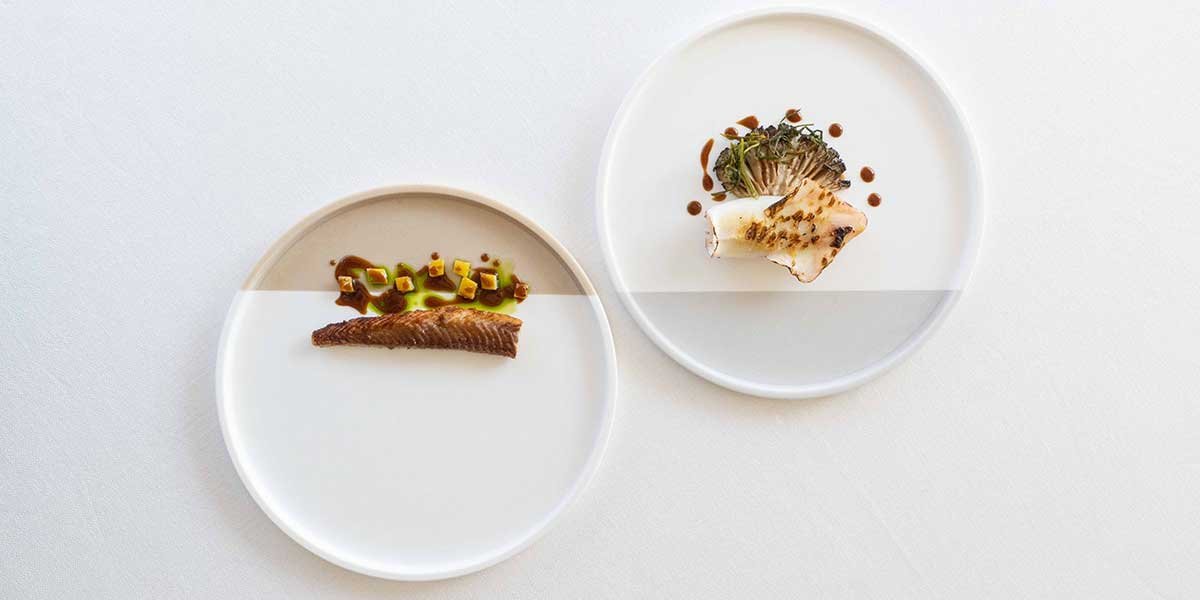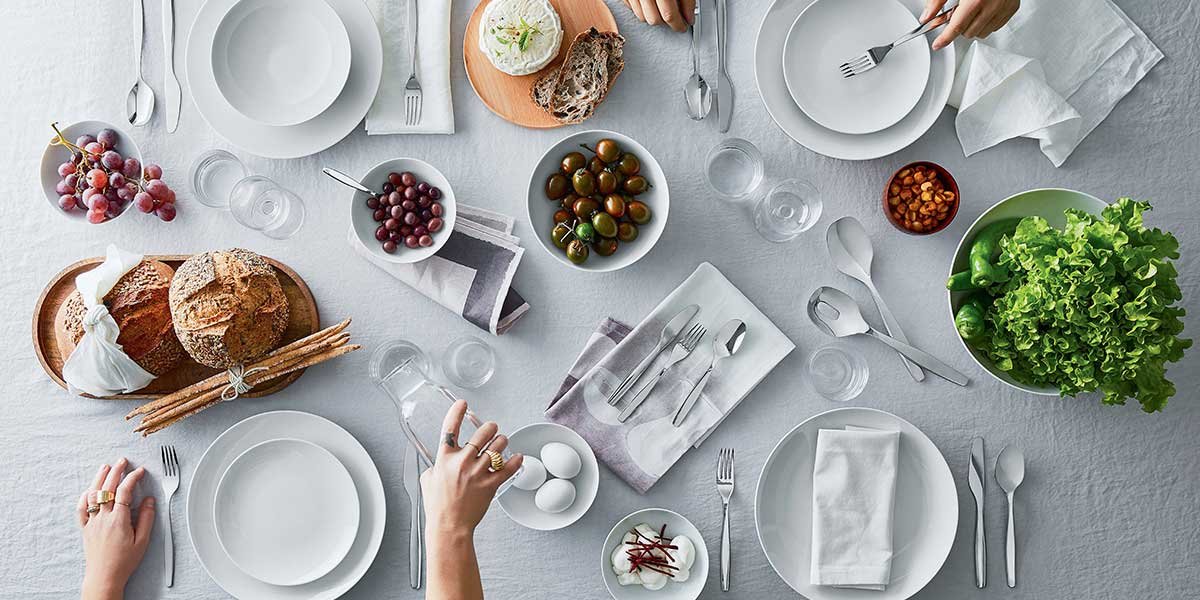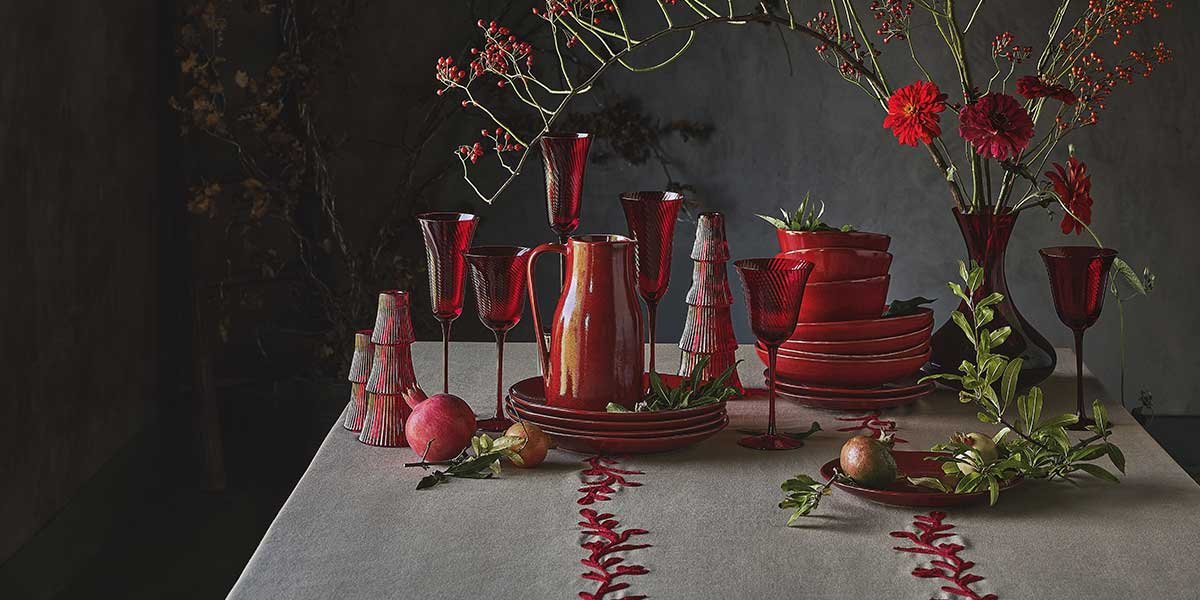Like any object, table service is the result of thought and execution, components that lead to an aesthetic and qualitative result made of choices and history.
Every day we use tableware that responds perfectly to our taste, but whose history we often don’t know: we eat from a plate, we drink from a glass that responds to our aesthetic sense, but… what’s behind it? That’s why we brought together the most representative brands of the art de la table, from companies that have their roots in past centuries, up to the most contemporary ones. Each has built its own product on the basis of impeccable craftsmanship and study of the material, to bring to the table – it must be said – sets of dishes and glasses with a unique appeal. Find our selection here, in strict chronological order.
1 – GINORI 1735 – ginori1735.com
If there is a fascinating history, it is that of the Ginori factory, closely linked to its territory, Doccia, near Florence: it was the Marquis Carlo Andrea Ginori who started the porcelain factory in 1735 – as reported in the brand – which today still represents a style icon. In the nineteenth century, under the enlightened guidance of Leopoldo Carlo Ginori Lisci, the company embarked on a profound renewal and the manufacturing expanded: the Richard Ginori Ceramics Society was born.
In 1923 the artistic genius of Giò Ponti arrived and from there it was a succession of creative twists, until 2013, when the Ginori Manufacture was purchased by Gucci (Kering group) and the renewed artistic direction brought freshness and novelty to the collections. In 2020, the brand also becomes essential and from Richard Ginori 1735 it becomes Ginori 1735, broadening the horizons of production (also) to home décor.
Choosing is difficult because the style is based on fashion notes, scraps of mythology – just remember Il Viaggio di Nettuno – or light floral friezes as in the Granduca Coreana or the geometric Catene and Labirinto table services, up to the union between oriental taste and artisanal expertise Italian. Historical pieces are also still in production, such as Galli Rossi – from 1740 – designed by the Florentine artist Ferdinando Campostrini. Truly for all tastes (strictly in porcelain).
The Galli Rossi collection, put into production in 1740.

A set of the Ginori 1735 collections with Oriente Italiano and bread plate Il Viaggio di Nettuno.


2 – WEDGWOOD – wedgwood.com
One of the world’s most renowned English manufacturers, with over 250 years of history. In 1759, Josiah Wedgwood opened a pottery shop in Burslem, Staffordshire, England. Here, through his experiments with clay, he created productions that have lasted until today, such as the Queen’s Ware or Jasper service. The tableware is made of Bone China, a durable yet lightweight material with a smooth and shiny texture, made from Chinese clay, a rock rich in kaolinite, Chinese stone, and animal bone powder.
The main difference from porcelain is the color, which has a slight creamy hue. The delicate Jasper Conrad Strata, a variation of the historic Jasper, has survived to this day. There are also fashion collaborations, such as the delicate decorations by designer Vera Wang and her Vera Wang Jardin, rich in gold brushstrokes, to essential white-on-white services, such as Intaglio in which the material is enhanced by thin concentric ton sur ton friezes.
Intaglio tableware service by Wedgwood
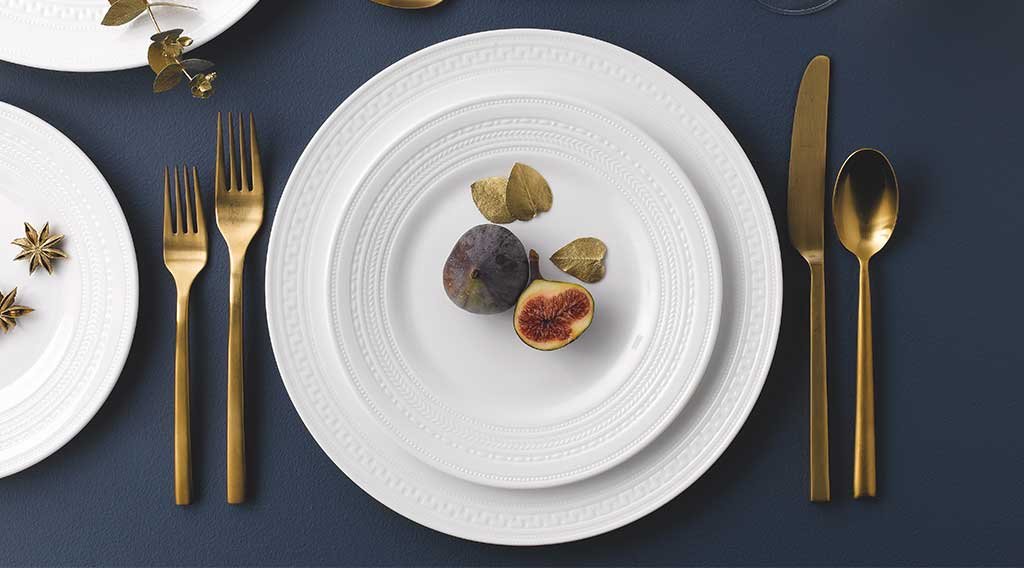
3 – VISTA ALEGRE – vistaalegre.com
Founded in 1824 1824 , Vista Alegre,in Ílhavo, Portugal, has always been associated with the country’s history and cultural life: it is no coincidence that its tableware is used by the Portuguese President, the White House, and several European royal houses. In 2001, Vista Alegre, a producer of porcelain, majolica, and stoneware, merged with Atlantis, a group specializing in crystal and glass, creating a unique partnership that spans from tableware to home decor.
Over the years, many artists have collaborated with the company, covering various creative sectors such as painting, sculpture, and architecture, while maintaining its natural connection to the territory. Among the many artists who have collaborated with the company are Siza Vieira, Patrick Norguet, Ross Lovegrove, and fashion brands and designers like Christian Lacroix and Oscar de la Renta. One of its most recent services is The Meaning, created in collaboration with Bordallo Pinheiro, a true garden on the table where flowers, fruits, and birds bloom on porcelain, combined with the highest Portuguese craftsmanship.
The Meaning porcelain tableware by Vista Alegre.


4 – ROSENTHAL – rosenthal.de
Founded in Bavaria in 1879 by Philipp Rosenthal, the company opened its artistic department in 1910 and began producing its first tableware services. In 1950, Philipp’s son joined the company, laying the foundations for modern management. In just 10 years, he created the Rosenthal Studio Line brand, establishing collaborations with designers and artists, including Spanish painter Salvador Dalí. The encounter between design and the company is also expressed in the design of the Selb headquarters by German architect and designer Walter Gropius, one of the founders of the Bauhaus.
Rosenthal’s aesthetic attitude, now part of the Arcturus group, is revealed in services like Dune from the Junto Stoneware collection, where glazed stoneware gives a tactile and sensual effect within a color palette that recalls sunlit landscapes and warm beaches with tactile irregular edges. Another choice is Tac Sensual, which takes the lines of Walter Gropius’s TAC service and colors them in new shades like Gentle Grey and Comfort Blue, while maintaining the functionality of the iconic Bauhaus design.
The Dune Junto Stoneware tableware by Rosenthal.
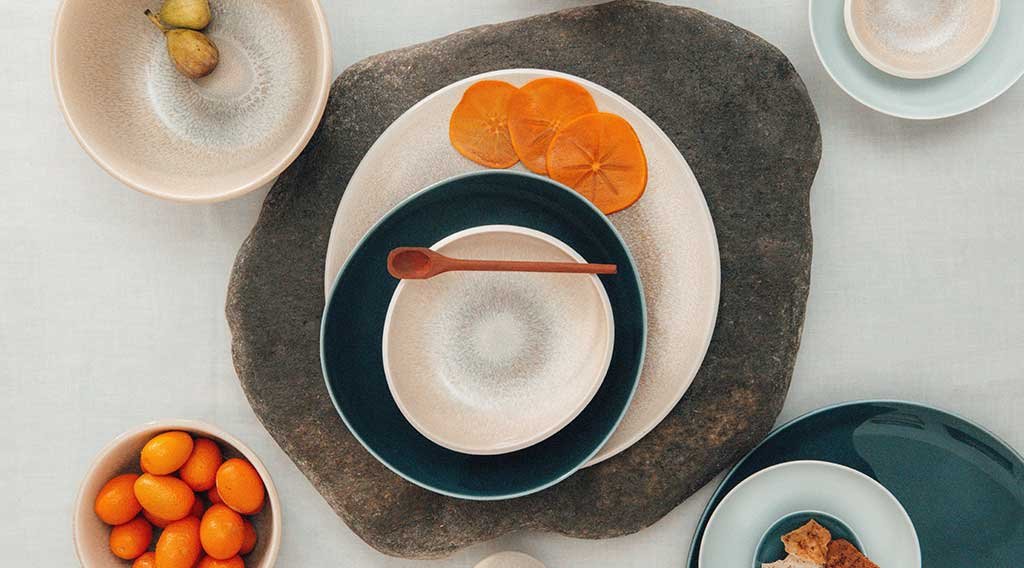
The relaxed shades of Tac Sensual by Rosenthal, designed by Rosenthal Creative Center.

5 – BITOSSI HOME – bitossihome.it
Colorful, mixed, and even fashion-forward, Bitossi is one of the most sensitive companies to the blending of arts in the tableware landscape today. However, its history dates back to the mid-19th century in the Montelupo Fiorentino area as an Italian manufacturer (then just Bitossi). The company has belonged to the Bitossi family for five generations and was included in the Register of Historic Italian Companies in 2014.
While it was representative of a traditional style linked to local production until the 1940s, today it brings flair and color to the table with eclectic services like La tavola scomposta, in partnership with Funky Table. It draws inspiration from fashion to art, design to graphics, creating synergies between seemingly different worlds. Among the latest collections is the Quadri service, reminiscent of a checkered notebook for jotting down changing seasons.
The Quadri tableware service by Bitossi Home.

A mix and match of different services: Quadri, Petalo, Parisienne, and Un buon ricordo, all by Bitossi Home.
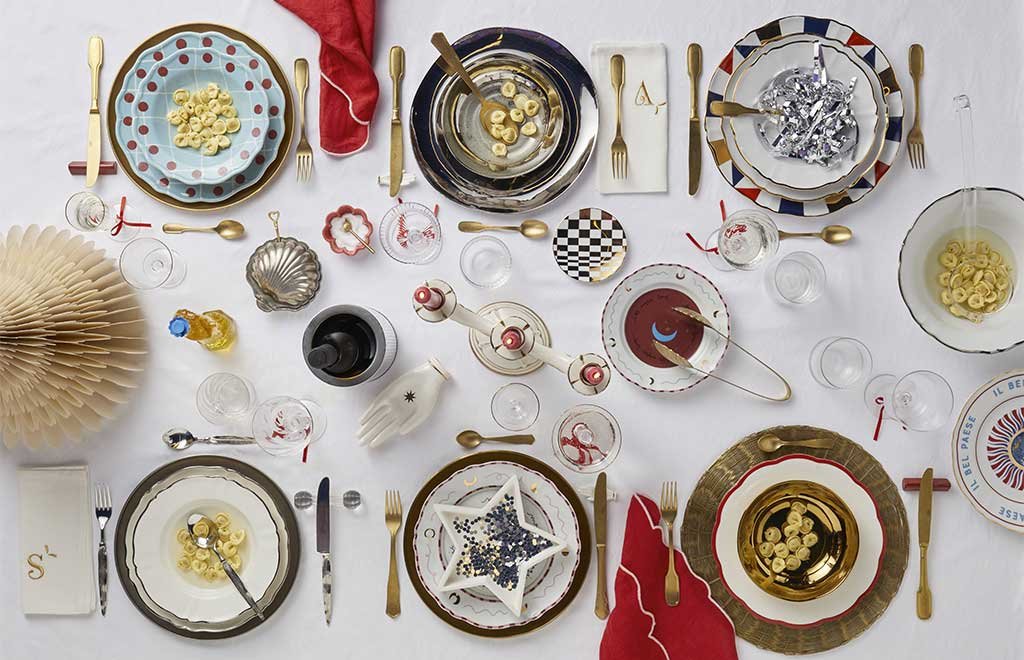
6 – IITTALA – iittala.com
Founded in 1881 by Swedish Petrus Magnus Abrahmsson, the company, which produces blown glass, is based in southern Finland, in the village bearing its name. Later acquired by A. Ahlstrom, it became a bastion of functionality and Nordic design, thanks to illustrious collaborations. Among its historic pieces is the Alvar Aalto vase created in 1936. The company’s great work on the product can be summarized as “less is more,” where the simplification of friezes adds practicality.
Over time, the company began producing porcelain tableware, but glass remains the natural focus of the company’s work, which also prides itself on the composability of its pieces. Among the glass tableware production, the Calunna service, whose original design dates back to 1964 with designer Oiva Toikka, features plates with small embossed concentric friezes, complemented by bowls and glasses, a representative example of the company’s philosophy.
Calunna plates, Nappula candelabras, Ultima Thule pitcher, Essence glasses, and Alvar Aalto collection, all by Iittala.

7 – SIEGER – sieger-germany.com
Born in the 1980s from the passion of architect Dieter Sieger in Germany, the design studio has been run since 2005 by his sons Christian and Michael Sieger. In the charming Harlotten castle, the company’s headquarters and creative studio, iconic pieces for the table and home are created in collaboration with prestigious tableware brands such as Porzellanmanufaktur Fürstenberg and the Milanese brand Ichendorf.
Produced in collaboration with the German porcelain company, the My China! service by Fürstenberg makes geometry its main focus, a small daily luxury with minimalist purity in fine porcelain: a real stage to combine and dress the table anew every day.
The My China! tableware service by Fürstenberg from Sieger.
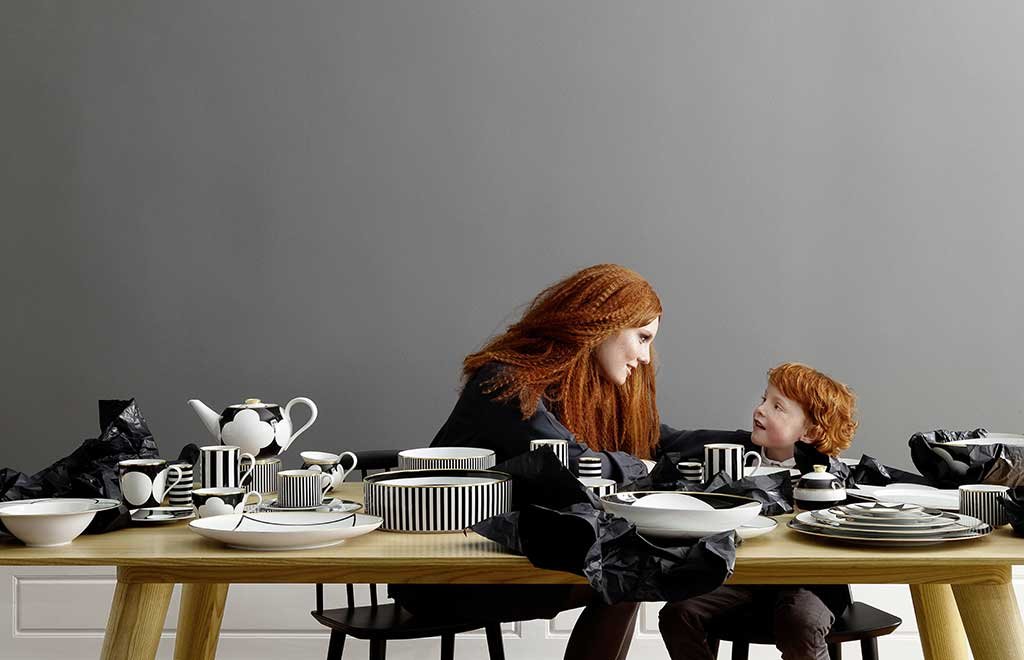
In the cover image, Table Décor by Bitossi Home.



